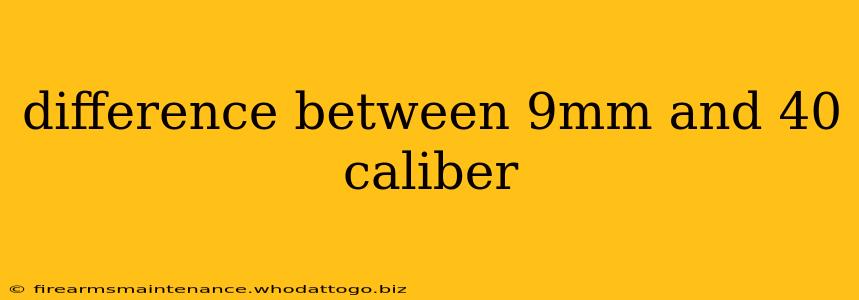Choosing between a 9mm and a .40 S&W handgun is a common dilemma for both seasoned firearm owners and newcomers alike. Both calibers are popular choices for self-defense and law enforcement, but understanding their key differences is crucial for making an informed decision. This detailed comparison will explore the ballistic performance, recoil characteristics, capacity, and overall suitability of each cartridge.
Ballistic Performance: Power and Penetration
The most significant difference between 9mm and .40 S&W lies in their ballistic performance. .40 S&W generally delivers a higher muzzle energy and a larger wound cavity upon impact, making it potentially more effective in stopping a threat. However, this increased power comes at a cost.
Muzzle Energy and Velocity:
-
.40 S&W: Typically boasts higher muzzle energy and velocity compared to the 9mm. This translates to a greater potential for knock-down power.
-
9mm: While possessing lower muzzle energy than the .40 S&W, modern 9mm ammunition offers impressive stopping power with advancements in projectile design, such as jacketed hollow points (JHPs).
Penetration:
-
.40 S&W: Known for its greater penetration capabilities, particularly with full metal jacket (FMJ) rounds. This can be advantageous in situations requiring penetration through barriers like car doors or windshields. However, over-penetration is a potential concern, posing risks to bystanders.
-
9mm: Offers improved penetration with modern JHP ammunition, though generally less than .40 S&W. The reduced penetration minimizes the risk of over-penetration, enhancing safety in populated areas.
Recoil and Shootability: Control and Accuracy
Recoil is another crucial factor influencing shooter preference. The .40 S&W's higher energy output results in significantly more felt recoil compared to the 9mm.
Recoil Management:
-
.40 S&W: The sharper recoil can be challenging for less experienced shooters, potentially impacting accuracy and follow-up shots. It requires more strength and control to manage effectively.
-
9mm: Offers milder recoil, making it easier to control, especially for smaller-framed individuals or those new to firearms. This allows for quicker target acquisition and faster follow-up shots.
Accuracy:
While both calibers are capable of delivering accurate shots, the 9mm's gentler recoil often translates to improved accuracy, particularly during rapid fire.
Magazine Capacity: Rounds per Magazine
Magazine capacity can significantly impact a firearm's effectiveness in a self-defense scenario.
Capacity Comparison:
-
.40 S&W: Generally offers lower magazine capacity compared to 9mm handguns, usually holding between 10-15 rounds depending on the firearm.
-
9mm: Typically boasts higher magazine capacities, frequently holding 15-17 rounds or even more, offering a greater reserve of ammunition.
Cost and Availability: Ammunition and Firearms
The cost of ammunition and the availability of firearms also play a role in the decision-making process.
Cost Considerations:
-
.40 S&W: Generally more expensive than 9mm ammunition.
-
9mm: Considerably more affordable, making it a more economical choice for practice and training.
Availability:
-
9mm: Widely available, making it easier to find ammunition and firearms in various styles and price ranges.
-
.40 S&W: While still available, it is less common than 9mm, with a smaller selection of firearms and ammunition.
Conclusion: The Right Choice Depends on Your Needs
Ultimately, the best caliber—9mm or .40 S&W—depends on individual needs and preferences. The .40 S&W offers higher stopping power and penetration, but with increased recoil and lower capacity. The 9mm provides manageable recoil, higher capacity, and greater affordability, while still delivering excellent stopping power with modern ammunition. Consider your experience level, physical capabilities, intended use, and overall priorities before making your decision. It's always advisable to rent or borrow both calibers to experience their differences firsthand before committing to a purchase.

